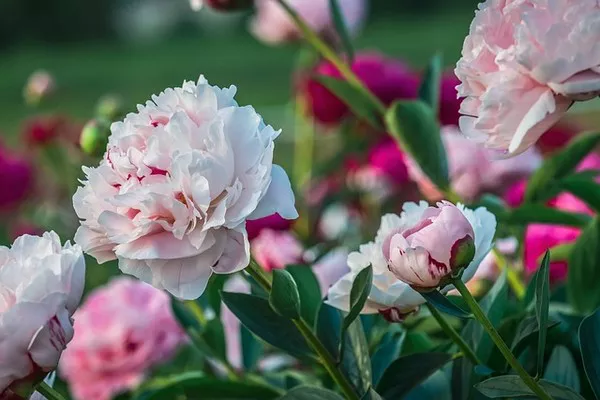Flowers have long been cherished for their ability to convey emotions, enhance aesthetics, and bring joy to various occasions. Whether adorning a tabletop centerpiece, gracing a wedding bouquet, or simply brightening up a room, cut flowers hold a unique allure. However, not all flowers are created equal when it comes to serving as impeccable cut specimens. In this comprehensive guide, we delve into the intricacies of what makes a good cut flower, unraveling the secrets that elevate floral arrangements to the realm of timeless elegance.
Longevity: A Testament to Quality
One of the hallmarks of an exceptional cut flower is its longevity. A good cut flower should exhibit resilience and endurance, maintaining its freshness and vibrancy for an extended period. The longevity of a cut flower is influenced by various factors, including the plant species, proper care, and harvesting techniques.
Plant Selection: Opting for flowers known for their longevity is the first step towards creating enduring arrangements. Varieties such as roses, lilies, chrysanthemums, and alstroemerias are renowned for their ability to maintain freshness over an extended period. Understanding the specific needs of each flower type is crucial in ensuring their post-harvest longevity.
Harvesting Techniques: The timing of harvesting significantly impacts the lifespan of a cut flower. Harvesting too early or too late can compromise the overall quality. It is essential to choose flowers at their peak bloom, when they have fully developed but haven’t yet started to decline. Proper pruning techniques, using sharp and clean tools, further contribute to the overall health of the cut flower.
Color Harmony: Crafting Visual Symphony
The visual appeal of a cut flower arrangement is undeniably one of its most captivating aspects. Achieving a harmonious blend of colors requires a thoughtful selection of flowers that complement each other, creating a visual symphony that captivates the beholder.
Understanding Color Theory: A basic understanding of color theory is indispensable when creating stunning floral arrangements. Complementary colors, analogous colors, and monochromatic schemes are all tools in the florist’s palette. Thoughtful combinations enhance the overall aesthetic impact of the arrangement.
Seasonal Considerations: Nature’s own color palette changes with the seasons, and leveraging this diversity can elevate the visual appeal of a cut flower arrangement. Choosing flowers that are in season not only enhances the arrangement’s aesthetic but also ensures the availability of fresh, high-quality blooms.
Fragrance: Capturing the Essence of Nature
The olfactory dimension of a cut flower arrangement adds an extra layer of sensory delight. A well-chosen blend of fragrant blooms can transform a space, evoking memories and creating a unique ambiance.
Balancing Scents: When selecting cut flowers for fragrance, it is crucial to strike a balance. Some flowers have a subtle, delicate scent, while others are more robust and intense. Combining different fragrances thoughtfully ensures that the overall effect is pleasant and not overwhelming.
Fragrance Preservation: Preserving the natural fragrance of cut flowers requires careful handling. Avoiding exposure to strong odors, keeping the flowers in a cool environment, and changing the water regularly are simple yet effective ways to maintain the integrity of their scent.
Form and Structure: Sculpting Elegance
The form and structure of cut flowers play a pivotal role in determining the overall elegance of an arrangement. A skilled florist understands how to balance different shapes and sizes to create a harmonious composition that captivates the eye.
Focal Points and Filler Flowers: Designing a captivating arrangement involves the use of focal points and filler flowers. Focal points, often larger or more vibrant blooms, draw attention and create a focal area. Filler flowers, with their delicate blooms or foliage, add texture and volume, enhancing the overall structure of the arrangement.
Consideration of Stem Lengths: Achieving the right balance of stem lengths is essential for creating an aesthetically pleasing arrangement. Variations in stem length add depth and dimension, allowing for a more dynamic and visually interesting composition.
Environmental Compatibility: Sustaining Beauty
The environment in which cut flowers are displayed significantly influences their longevity and overall appeal. Understanding the environmental factors that impact cut flowers is key to preserving their beauty.
Temperature and Humidity Control: Extremes in temperature and humidity can have detrimental effects on cut flowers. Keeping them in a cool, well-ventilated space prolongs their freshness. Avoiding direct sunlight and drafts is equally important in maintaining their overall quality.
Water Quality and Hydration: Proper hydration is fundamental to the longevity of cut flowers. Using clean, fresh water and regularly changing it helps prevent the growth of bacteria that can accelerate decay. Additionally, adding flower food to the water provides essential nutrients that nourish the blooms.
Conclusion
In the world of floristry, the art of selecting the perfect cut flower goes beyond mere aesthetics. It involves a nuanced understanding of biology, design principles, and environmental factors. By carefully considering the longevity, color harmony, fragrance, form, and environmental compatibility, one can create floral arrangements that transcend the ordinary, capturing the essence of timeless beauty. As we unravel the secrets behind what makes a good cut flower, we embark on a journey to elevate the art of floral design, creating moments of enduring elegance and joy.


